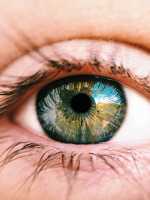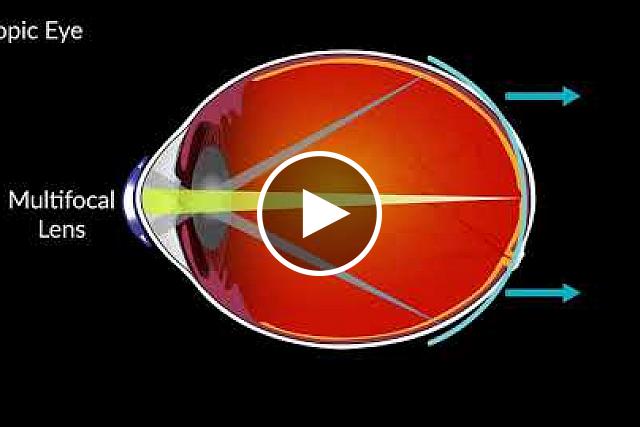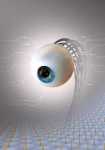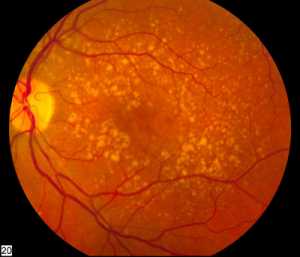Author Interviews, Genetic Research, Ophthalmology, Science / 12.03.2021
Many More Genes Discovered to Play a Role in Eye Color
MedicalResearch.com Interview with:
 Dr Pirro Hysi
Senior Lecturer in Ophthalmology
Kings College London
MedicalResearch.com: What is the background for this study?
Response: - Iris (eye) color is an important human trait. It is one of the main features that makes our faces unique and recognizable. Iris color is similar to other pigmentatio traits, like hair and skin color, in that it is determined by the concentration and relative ratios of the melanin pigment. Pigmentation traits are roughly determined by several of the same genes regulating pigmentation, but many other genes seem to selectively determine pigmentation in any of these tissues.
(more…)
Dr Pirro Hysi
Senior Lecturer in Ophthalmology
Kings College London
MedicalResearch.com: What is the background for this study?
Response: - Iris (eye) color is an important human trait. It is one of the main features that makes our faces unique and recognizable. Iris color is similar to other pigmentatio traits, like hair and skin color, in that it is determined by the concentration and relative ratios of the melanin pigment. Pigmentation traits are roughly determined by several of the same genes regulating pigmentation, but many other genes seem to selectively determine pigmentation in any of these tissues.
(more…)
 Dr Pirro Hysi
Senior Lecturer in Ophthalmology
Kings College London
MedicalResearch.com: What is the background for this study?
Response: - Iris (eye) color is an important human trait. It is one of the main features that makes our faces unique and recognizable. Iris color is similar to other pigmentatio traits, like hair and skin color, in that it is determined by the concentration and relative ratios of the melanin pigment. Pigmentation traits are roughly determined by several of the same genes regulating pigmentation, but many other genes seem to selectively determine pigmentation in any of these tissues.
(more…)
Dr Pirro Hysi
Senior Lecturer in Ophthalmology
Kings College London
MedicalResearch.com: What is the background for this study?
Response: - Iris (eye) color is an important human trait. It is one of the main features that makes our faces unique and recognizable. Iris color is similar to other pigmentatio traits, like hair and skin color, in that it is determined by the concentration and relative ratios of the melanin pigment. Pigmentation traits are roughly determined by several of the same genes regulating pigmentation, but many other genes seem to selectively determine pigmentation in any of these tissues.
(more…)






 Prof. FAN Zhiyong PhD
University of California, Irvine
HKUST School of Engineering
MedicalResearch.com: What is the background for this study? What are the main findings?
Response: According to the report of The World Health Organization, there are over 252 million people suffering from visual impairment globally and 15 million of them are difficult to cure by conventional medical methods. However, today, even the best bionic eyes have only 200 clinical trials, less than 1 ppm of all the patients, mainly due to their poor performance and high cost. The huge gap in supply and demand triggers the study of bionic eyes with performance comparable to human eyes. One important reason for their poor performance is the mismatch in shape between the flat bionic eyes and concave sclera. To protect the soft tissue in eyes from being damaged by the bionic surface, the implanted bionic eyes have to be small. This has limited the sensing area and further the electrodes number, and finally yielded poor image sensing characters with low resolution and narrow field-of-view.
In this work, we are trying to achieve high performance image sensing by biomimeticing human eyes. The high-density NWs are well aligned and embedded in a hemispherical template to serve as retina. The conformal attachment of bionic eyes with sclera enables the large sensing area and wide visual angle. In addition, each individual high-density nanowires can potentially work as an individual pixel. By addressing these challenges, our device design has huge potential to improve the image sensing performance of bionic eyes.
Prof. FAN Zhiyong PhD
University of California, Irvine
HKUST School of Engineering
MedicalResearch.com: What is the background for this study? What are the main findings?
Response: According to the report of The World Health Organization, there are over 252 million people suffering from visual impairment globally and 15 million of them are difficult to cure by conventional medical methods. However, today, even the best bionic eyes have only 200 clinical trials, less than 1 ppm of all the patients, mainly due to their poor performance and high cost. The huge gap in supply and demand triggers the study of bionic eyes with performance comparable to human eyes. One important reason for their poor performance is the mismatch in shape between the flat bionic eyes and concave sclera. To protect the soft tissue in eyes from being damaged by the bionic surface, the implanted bionic eyes have to be small. This has limited the sensing area and further the electrodes number, and finally yielded poor image sensing characters with low resolution and narrow field-of-view.
In this work, we are trying to achieve high performance image sensing by biomimeticing human eyes. The high-density NWs are well aligned and embedded in a hemispherical template to serve as retina. The conformal attachment of bionic eyes with sclera enables the large sensing area and wide visual angle. In addition, each individual high-density nanowires can potentially work as an individual pixel. By addressing these challenges, our device design has huge potential to improve the image sensing performance of bionic eyes.






















